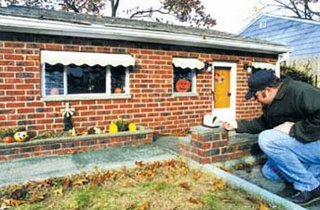 Today, the U.S. Census Department released its monthly “New Residential Home Sales” report for January showing the third worst monthly drop-off in new home sales since the housing recession began.
Today, the U.S. Census Department released its monthly “New Residential Home Sales” report for January showing the third worst monthly drop-off in new home sales since the housing recession began.This is particularly important as it has been suggested recently, most notably by Bob Toll, CEO of Toll Brother, that the new home market was finding a bottom.
Clearly though, this is not quite the case as every region showed a substantial decline to seasonally adjusted home sales from December of 2006.
Furthermore, nearly every region (save a small increase in the Midwest region) showed declines on a year-over-year basis with the West registering a frightening 50.4% fall-off.
Interestingly, even with the unseasonably warm weather that clearly had an effect on existing home sales, the Northeast fell back into the negative column (as I had noted last month, the December figure was revised down this month) for new home sales plunging 18.7% from December and declining 1.6% below the January 2006 results.
But easily the most notable decline comes from the West region where sales sunk 37.4% from December putting that region 50.4% below the results of January 2006.
So, we are now seeing significant declines on a year-over-year basis to the first month in 2006 where new home sales stared to show weakness.
This should not be understated as it is clearly showing continued and even accelerating weakness to new home sales.
Look at the following summary of today’s report:
National
- The median price for a new home was down 2.0% as compared to January 2006.
- New home sales were down 20.1% as compared to January 2006.
- The inventory of new homes for sale increased 2.7% as compared to January 2006.
- The number of months’ supply of the new homes has increased 28.3% as compared to January 2006.
- In the Northeast, new home sales were down 1.6% as compared to January 2006.
- In the West, new home sales were down 50.4% as compared to January 2006.
- In the South, new home sales were down 11.2% as compared to January 2006.
- In the Midwest, new home sales were up 0.6% as compared to January 2006.
housing+bubble housing bubble realtor real+estate NAR home+sales economy recession interest+rates bernanke greenspan
Copyright © 2007
PaperMoney Blog - www.paperdinero.com
All Rights Reserved
Disclaimer
Copyright © 2007
PaperMoney Blog - www.paperdinero.com
All Rights Reserved
Disclaimer












